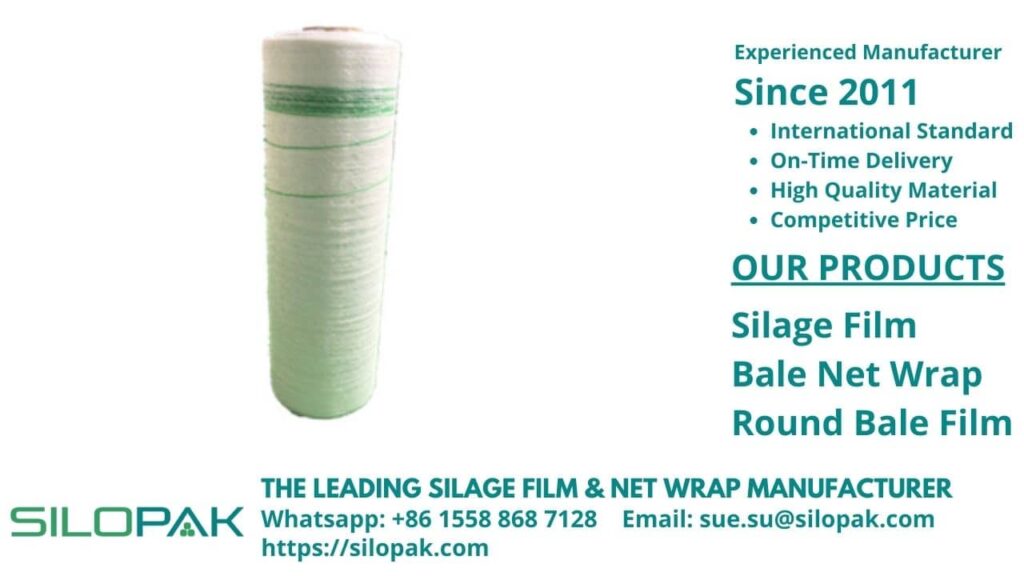
Net wrapping bales might not be something that everyone wants to know the importance of. But if you are a farmer making your bales, it would be of utter significance to learn a few things about these implements, you know. And if you are making the bales to sell them to fellow farmers, the information contained in this piece would be very beneficial for you to gather. See, there are many advantages to expect out of using the net wrap, and we are here to discuss such advantages in a detailed manner so you can make an informed decision.
contents
Faster Baling Process
Net wrapping bales can make the baling process all the quicker. You will only require 1¼ to 2½ turns to completely cover the entire bales. As a comparison, twine will take 20 to 30 turns to complete the job.
Per hour, 32% more bales can be baled using a baler in conjunction with net wrap. At a speed like this, the process can run in a lot shorter time, and it helps you save more on both labor and fuel. Net wrap’s efficacy is felt, especially when you operate on large farmland.
Decrease in Baling Losses
Net wrapping bales help you reduce baling losses, too. Using a net wrap, you will find that baling takes fewer times. As such, material loss due to particles jumping out of the baler can be reduced in a significant manner. Wrapping losses with net wrap amount to 1% of dry matter. Compare that to twine’s 2.9% loss of dry matter.
Decrease Outdoor Storage Losses
Net wrapping bales practically eliminate outdoor storage losses. Storing bales outdoor leads to spoilage of large amounts, making it important to keep the bales indoors. While tarp is helpful, you might find it challenging to implement. The net wrap helps the bales to shed water content more thoroughly, preventing spoilage in the process.
But keep in mind that this effect only takes place when you put the net-wrapped bales over a surface that is well-drained such as pallets or crushed rocks. If the bales are located directly above the ground, even net wrap will fail in keeping them fairly dry all the time. The bottom part of a bale will act like a sponge, absorbing moisture and leading to the entire batch spoiling at the end.
Using the net wrap, in addition to reduced losses of dry matter, the nutrient composition of the bales is maintained. On average, the total loss of dry matter for bales wrapped with a net wrap is only 7.3%, while twine usage results in an 11.3% loss.
Still, regardless of which one you opt for, outside storage often leads to a significant loss. Nothing can substitute inside storage, so you might want to first start there before moving on to the subject of selecting the right wrapper. It’s just more economical to store the bales inside, given that the price of hay and the production costs are higher these days.
Improved Appearance
Net wrapping bales possess such esthetic that is pleasing to look at. This is will be helpful ultimately when you are selling bales to others as your products will have better appeal and higher marketability. Handling and transport wouldn’t be a hassle as bales that are net-wrapped have reliable integrity—especially if the bales are made of chopped straw.
Disadvantages?
Net wrapping bales do have some cons, though. For example, compared to twine, net wrap is more expensive. Production costs tend to rise more, too, as the use of net wrap increases the initial cost by up to 25%, at least. But the good trumps the bad; the costs and expenses justify the result, and long as it brings business, it shouldn’t be that big of a problem. High costs can be substituted with a faster process and reduced loss of dry matter.
In some cases, net-wrapped bales tend to freeze hard to the ground below them. This would be a concern, especially when you store the bales outside.
Where to Get One?
Net wrapping bales by Silopak are known for product quality. We only give you the real deal as we understand how much you value the implements. We have a wide array of wrapping products for you to choose from, and you can select one that you need conveniently on our official website.

